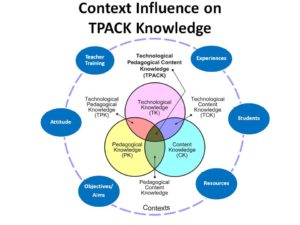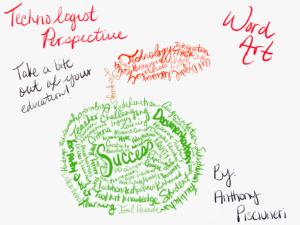This Multimedia Reflection serves to address the Technologist Module on eCampus Ontario and PD files. To begin, I must address the issue within the video that spoke about XYZ approaches. I must admit, I was unsure and naïve about this concept and had to do some research regarding the terminology used. Subsequently, I came to find that this XYZ approachcan be trying to tie in elements of technology and integrating them realizingly within a classroom setting. I found that this concept altered my perception about the passages I began to read and explore in depth. Furthermore, I saw this module as a way to effectively use technology to deliver content that is relevant, interactive and informative. When reviewing this module, it mentioned the importance of digital literacies and how they can be complex. This reminded me of the Cynefin model for complex and chaotic designs. I realized as an educator, I must consider the complexity of a task and how it may enhance a lessen or diminish a student’s confidence. How would I choose a tool that could only benefit the learning environment?

 This question was answered by looking deeper within the module to discover the Technologist Module Design Thinking Process. Woven into this model is the premise that empathy should be at the root of all design related connections and prototypes. I must look into the needs of students and develop a differentiated instructional method that is aimed towards equality and multiple intelligences. In addition, I must do my best to remain fair and create effective lessons that integrate technology that is culturally respected and diverse. As mentioned in the module, “design thinking needs to start with understand what that person needs and how they usually go about accessing it.” Moreover, it provided a suggestion as to how to brainstorm using a Technology-Enables Learning Activity Document or Mindmap to achieve success within a class and as an educator. Tools that I hope to use within a class setting!
This question was answered by looking deeper within the module to discover the Technologist Module Design Thinking Process. Woven into this model is the premise that empathy should be at the root of all design related connections and prototypes. I must look into the needs of students and develop a differentiated instructional method that is aimed towards equality and multiple intelligences. In addition, I must do my best to remain fair and create effective lessons that integrate technology that is culturally respected and diverse. As mentioned in the module, “design thinking needs to start with understand what that person needs and how they usually go about accessing it.” Moreover, it provided a suggestion as to how to brainstorm using a Technology-Enables Learning Activity Document or Mindmap to achieve success within a class and as an educator. Tools that I hope to use within a class setting!
For my project, I wanted to create a POWTOON that highlighted the use of “toolkits” and addresses digital practices clearly. I wanted to define the role of using empathy and feedback from students to enhance practices. Using the SAMR model and TPACK design, I decided to make it my mission to revolutionize the classroom atmosphere by constantly keeping focuses on what task needs to be accomplished, what success criteria has to be achieved and what expectations need to be reinforced. In addition, I decided to do a Word Art in the shape of an apple to show “taking a bite out of education.” I believe this is very important in order to illustrate how this technologist perspective comprises a multi-dimensional approach to learning. It looks at a range of learners and the universal design to empathize with students to make sure needs are being met. In addition, for my last multimedia reflection I created a music video that was developed using iMovie. Personally, I find iMovie to be easier and faster to manipulate sources. I did find PowToon to lag behind and I had to keep logging out and signing back in. Furthermore, I had a tough time accessing some materials I wanted to use as this site is not free an accessible to all students and educators, there is a paid version with full access to high definition videos and cartoon characters. I did draw a Word Art map that I think emphasizes the points made in this video well. It outlines how education meets the fruit of knowledge. And if students and educators learn to “bite” from good sources, they ultimately become healthy and digitally sound individuals. I have seen this in action, as during my practicum placement multiple lesson plans were modified or altered to ensure success of the students and to help their understanding of the material.

In my own practicum experience, I was only allowed to use the projector as the room limited my creativity to explore other options. However, after using the Tool Parade and realizing the endless possibilities technology provides, I am equipped with many worthwhile options that introduce effective learning strategies. I cannot wait to use Google Expedition, Weebly, and Padlet to “revolutionize” the setting and provide students with the means to achieve and work with technology.
Ultimately, as an educator I wish to impart a technologically savvy wisdom that incorporates technology efficiently and successfully into the classroom setting. It is easy to look at a lesson and choose a paper and pencil activity—but that is not the most effective way to teach. How we augment these pieces within a lesson define the success rate of the students and the educational system that supports the growth and minds of our future children. I am doing my best and using my “toolkit” to dive into multi-dimensional lessons that reinforce concepts and introduce inquiry and discovery learning techniques. I will not choose to sit by and use the same redundant methods that made me fall asleep in a class. No! I choose to be an advocate for this technological integration by doing my research and modifying my practice. I am ready for the challenge… Are You?
Enjoy,
Anthony Pisciuneri
